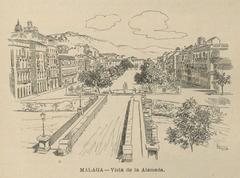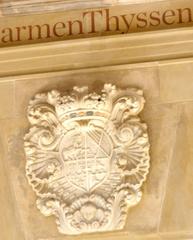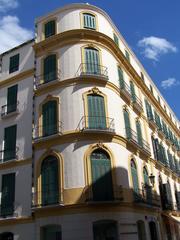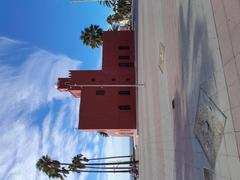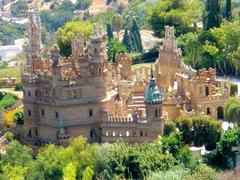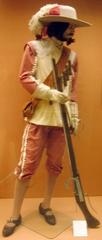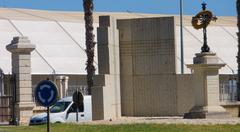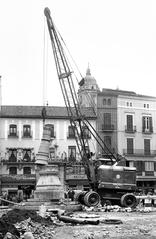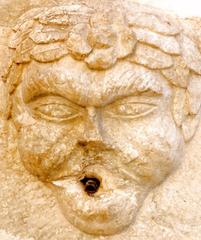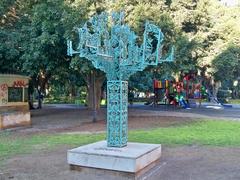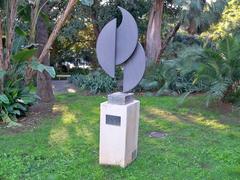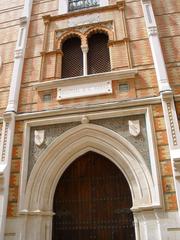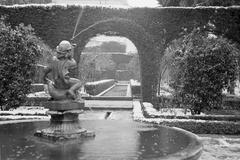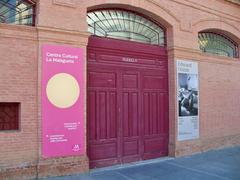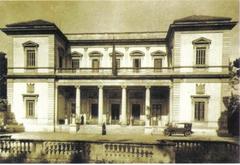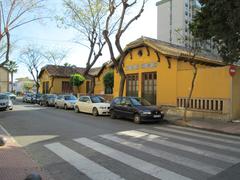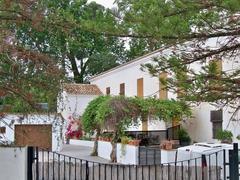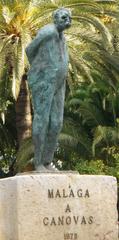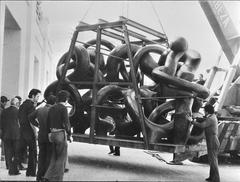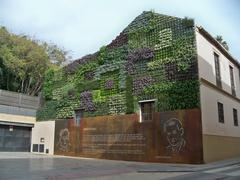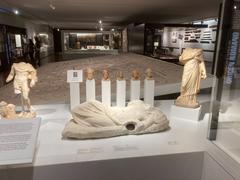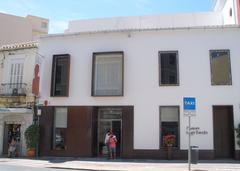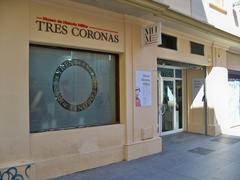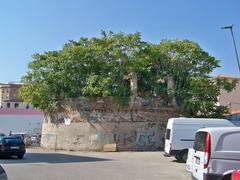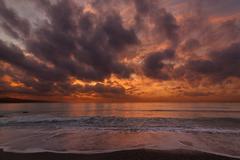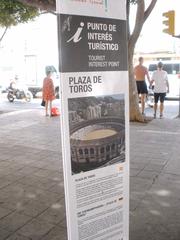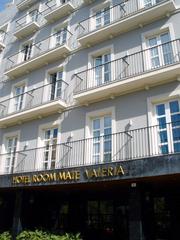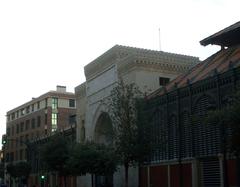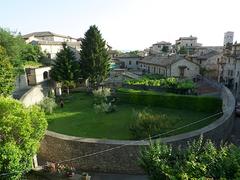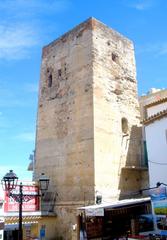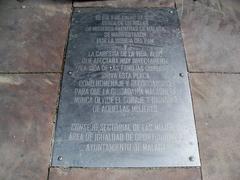Fuerte de San Lorenzo, Málaga, Spain: Visiting Hours, Tickets, and Travel Guide
Date: 14/06/2025
Introduction
Fuerte de San Lorenzo is an 18th-century fortress whose remains are seamlessly integrated into the urban landscape of Málaga, Spain. Constructed in 1701 as part of the city’s coastal defense network, the fort was designed to shield Málaga’s harbor and population from piracy and foreign naval threats during a period marked by geopolitical turbulence. Today, the archaeological vestiges of Fuerte de San Lorenzo, preserved beneath a protective glass panel along the Alameda Principal, provide a tangible link to the city’s military history and a unique, accessible experience for visitors and residents alike.
This comprehensive guide details everything you need to know about visiting Fuerte de San Lorenzo—including its historical context, practical visitor information, accessibility, and nearby attractions—ensuring a rewarding and informative experience.
Table of Contents
- Introduction: History and Significance
- Location and Accessibility
- Visiting Hours and Tickets
- Viewing the Remains
- Site Condition and Preservation
- Visitor Experience and Practical Tips
- Educational and Cultural Value
- Nearby Attractions
- Frequently Asked Questions (FAQ)
- Responsible Tourism and Preservation
- Further Resources
- Conclusion and Call to Action
History and Cultural Significance
Foundation and Strategic Context
Fuerte de San Lorenzo was built in 1701 as a response to the vulnerability of Málaga’s coastline, particularly after the city suffered a devastating bombardment by a French fleet in 1693, which saw over 3,000 cannonballs strike the city (La Opinión de Málaga). Constructed during the War of Spanish Succession (1701–1714), the fort was part of a broader initiative to protect the city’s harbor and population from foreign navies and privateers.
Architectural Features
Designed as a bastioned fortification, Fuerte de San Lorenzo featured robust stone walls, artillery platforms, and defensive bastions facing the sea. Its strategic position near the shoreline of what is now the Alameda Principal allowed it to provide direct artillery coverage of the harbor. However, ongoing sedimentation and urban development eventually left the fort increasingly landlocked, reducing its defensive effectiveness by the late 18th century (La Opinión de Málaga).
Demolition and Legacy
The fort was demolished in 1802, but its memory survives in Málaga’s urban identity. Archaeological remains discovered during recent urban works are now preserved under glass, allowing the public to engage with a once-critical part of the city’s defensive network.
Location and Accessibility
Fuerte de San Lorenzo’s remains are located along the northern side of the Alameda Principal, one of Málaga’s main boulevards, near the intersection with the Guadalmedina River and close to Atarazanas Market. The site is easily accessible on foot from the historic center, port, and shopping districts, and is well-served by public transport, including buses and the Málaga Metro (with Atarazanas station nearby) (MalagaHoy, Infraestructuras y Movilidad).
Visiting Hours and Tickets
- Visiting Hours: The remains of Fuerte de San Lorenzo are part of a public, open-air archaeological display and are accessible 24 hours a day, seven days a week.
- Tickets: There is no entrance fee; the site is free to visit and does not require prior booking.
Viewing the Remains
The fort’s archaeological vestiges are visible beneath a large glass viewing panel built into the pavement of Alameda Principal. This transparent structure enables visitors to observe the original stonework and foundations directly from street level. Informational signage in Spanish (and in some locations, English) provides historical context and architectural details (Infraestructuras y Movilidad, MalagaHoy).
Suggested visual: High-quality image of the glass viewing wall with alt text: “Glass viewing wall showing the remains of Fuerte de San Lorenzo in Málaga”.
Site Condition and Preservation
Archaeological investigations conducted during metro construction uncovered well-preserved walls and structural elements of the fort, though interior spaces have largely disappeared. The city has prioritized the site’s protection by installing the glass panel, carrying out conservation efforts, and providing interpretive signage. However, periodic maintenance is necessary, as the glass can sometimes be damaged or obscured by litter (La Opinión de Málaga).
Visitor Experience and Practical Tips
What to Expect
- Urban Integration: Fuerte de San Lorenzo is a unique archaeological site embedded in a busy city boulevard, ideal for those interested in history, archaeology, or urban heritage.
- Accessibility: The remains are street-level and accessible to people with reduced mobility, though caution is advised when walking over the glass, especially if wet.
- No Dedicated Museum: The site is not a standalone attraction with extensive ruins or visitor facilities, but forms part of Málaga’s living history.
Practical Tips
- Best Visiting Times: Early mornings or late afternoons provide the best lighting and temperature for viewing and photography.
- Photography: To avoid reflections, photograph at an angle or during overcast conditions.
- Nearby Amenities: The vibrant Alameda Principal offers cafes, shops, and access to the Atarazanas Market.
- Weather: Málaga’s summers can be hot; bring water and sun protection.
Educational and Cultural Value
Fuerte de San Lorenzo is an important piece of Málaga’s historical puzzle, representing the city’s response to 18th-century military threats. Its preservation in the heart of the city demonstrates modern approaches to heritage management—balancing accessibility and conservation. The site is often included in educational walking tours and public history initiatives (Visit Andalucía, Visit Málaga).
Nearby Attractions
- Mercado de Atarazanas: Historic market offering local food and tapas, located just steps from the site.
- Alameda Principal: Recently renovated boulevard lined with historic buildings.
- Museo de Málaga: Museum with comprehensive exhibits on the city’s history and art.
- Málaga Cathedral and Alcazaba: Iconic landmarks within a short walk.
Frequently Asked Questions (FAQ)
Q: What are the visiting hours?
A: The site is open 24/7 as a public archaeological display.
Q: Is there an entrance fee?
A: No, visiting Fuerte de San Lorenzo is free.
Q: Are guided tours available?
A: Many historic walking tours of Málaga include the site. Check with local tour operators for current offerings.
Q: Is the site accessible for wheelchairs?
A: Yes, the site is at street level and accessible, though caution is advised on the glass panel.
Q: Can I visit year-round?
A: Yes, the site is open every day, all year.
Responsible Tourism and Preservation
Help preserve Málaga’s archaeological heritage by respecting the site, avoiding contact with the glass panel, and not leaving litter. Public awareness and responsible visitation are essential for the ongoing protection of sites like Fuerte de San Lorenzo (Infraestructuras y Movilidad).
Further Resources
For additional information and up-to-date news, consult the following resources:
- Infraestructuras y Movilidad: Reposición arqueológica del muro-este del Fuerte de San Lorenzo en la Alameda Principal
- MalagaHoy: El insospechado buen estado del fuerte de San Lorenzo
- Diario Sur: El Castillo de San Lorenzo, un fuerte en una alameda
- Wikimedia Commons: Fuerte de San Lorenzo, Málaga
- Visit Andalucía: Málaga City Visitor’s Guide
- La Opinión de Málaga: Castillo de San Lorenzo bajo cristal
Conclusion and Call to Action
Fuerte de San Lorenzo stands as a subtle but significant testament to Málaga’s layered history and its enduring maritime legacy. Its central location, free access, and educational value make it a worthwhile stop for all visitors to the city. To deepen your experience, consider joining a guided tour or exploring digital resources and interactive maps.
Stay connected by downloading the Audiala app for up-to-date guides, maps, and special features on Málaga’s historical sites. For more travel tips and the latest news, follow Málaga’s official tourism channels and check out related articles on the city’s rich cultural offerings.
Sources:
- Infraestructuras y Movilidad: Reposición arqueológica del muro-este del Fuerte de San Lorenzo en la Alameda Principal
- MalagaHoy: El insospechado buen estado del fuerte de San Lorenzo
- Diario Sur: El Castillo de San Lorenzo, un fuerte en una alameda
- Visit Andalucía: Málaga City Visitor’s Guide
- La Opinión de Málaga: Castillo de San Lorenzo bajo cristal
- Wikimedia Commons: Fuerte de San Lorenzo, Málaga
